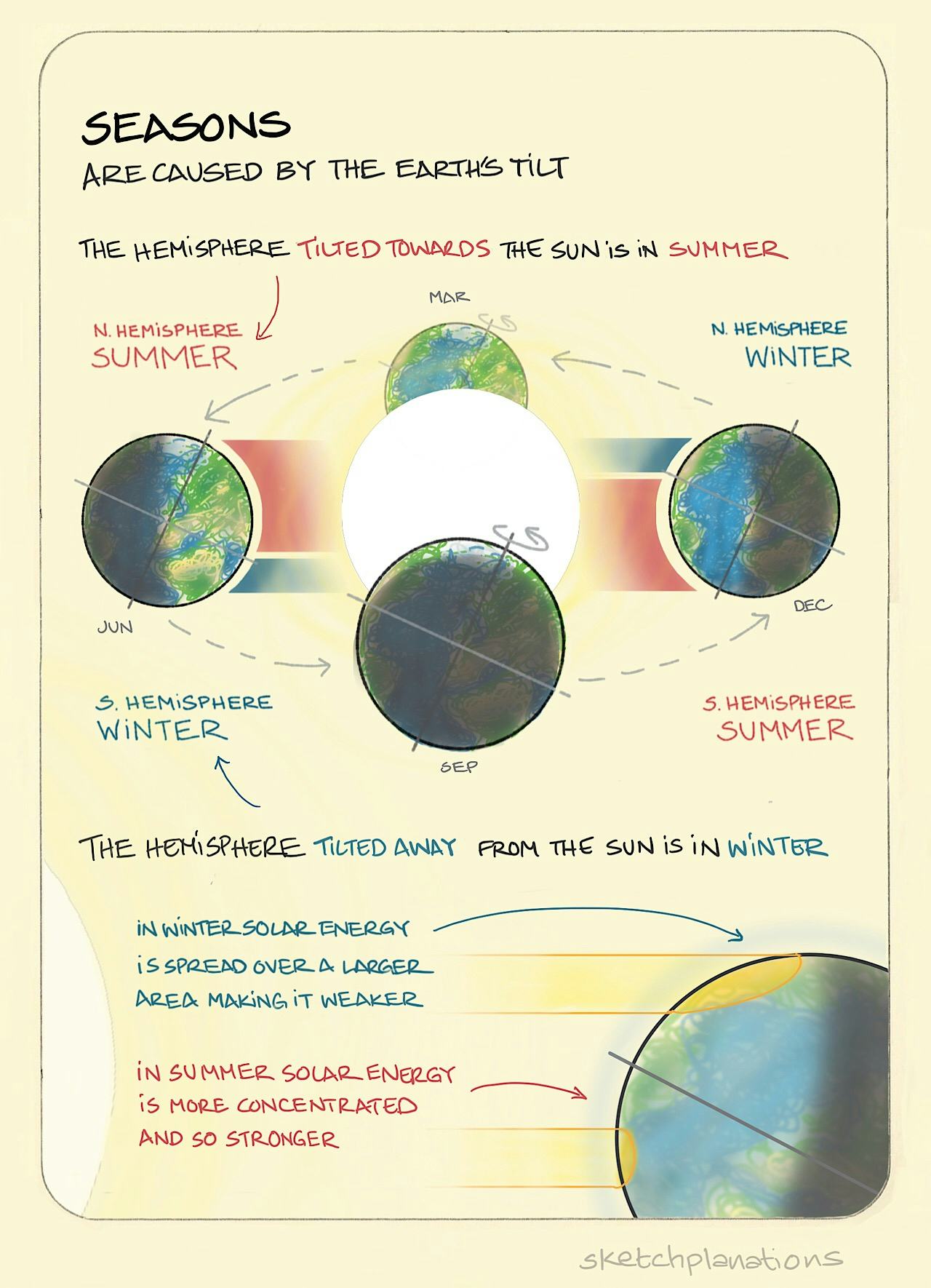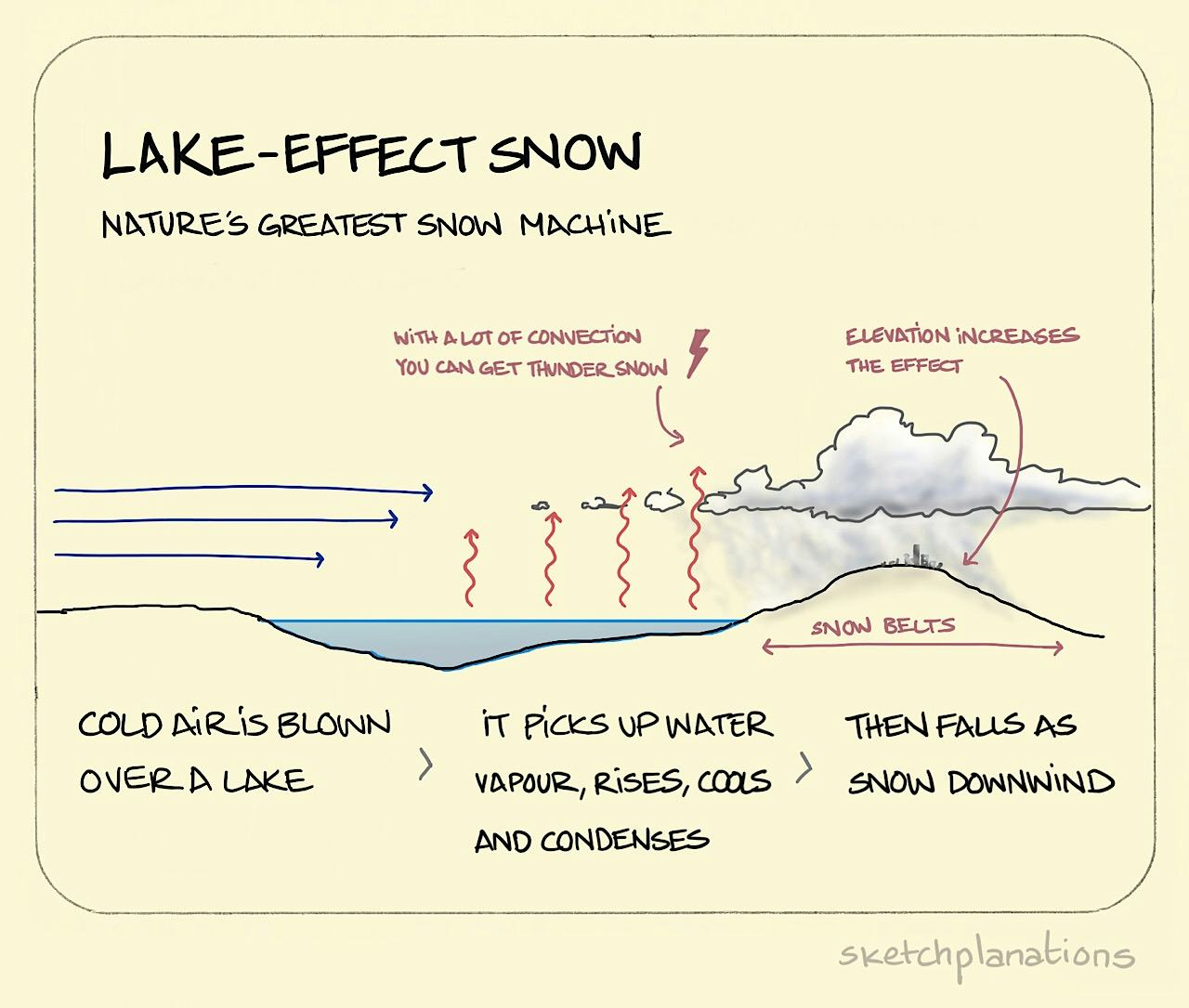Get my new weekly sketch in your inbox
Join over 30,000 people learning something new in a moment each Sunday.

Seasons
Are caused by the Earth’s tilt. As the Earth goes around the sun, the tilt of Earth’s axis — 23.5 degrees — causes at different times of the year, the two hemispheres, North and South, to be either tilted towards the sun or away from it.
In winter, and closer to the poles, because light from the sun hits at a greater angle, the solar energy gets spread over a larger area. This makes it weaker, and cooler and gives rise to winter.
In summer, and closer to the equator, light from the sun hits more directly and so is concentrated on a smaller area making it stronger.
The tilt also means that the number of daylight hours is greater in the summer than in the winter, and hence the amount of time it gets heated, which also contributes to the seasons.
Seasons are reversed in the two hemispheres, so if it’s winter in the Northern Hemisphere it’s summer in the Southern and vice-versa. The further from the equator you go, the bigger the effect of the seasons. So, temperatures in Ecuador stay relatively constant throughout the year, while the poles experience extremes of 24-hour daylight or 24-hour night and great freezes and great thaws.
You’re welcome to use and share this image and text for non-commercial purposes with attribution. Go wild!
See licence

